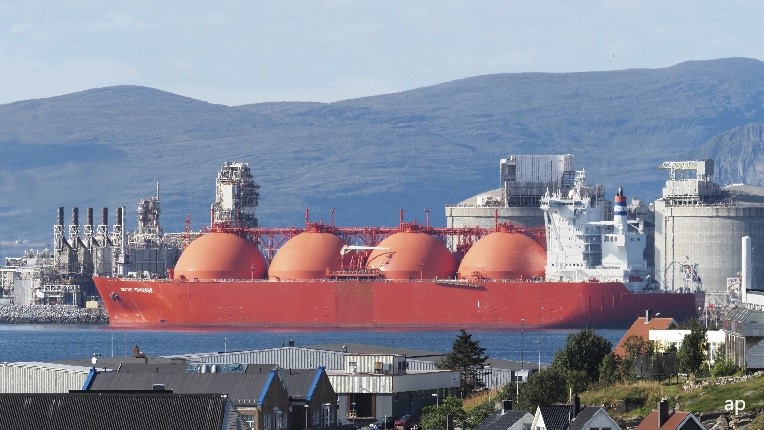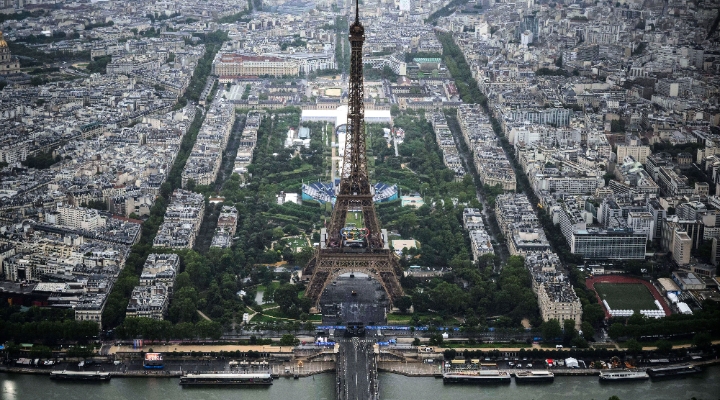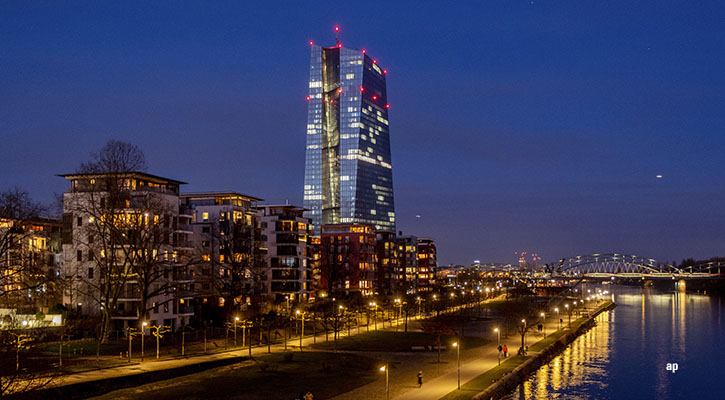
Europe has done well in pivoting away from Russian gas imports. After painful energy price rises in 2022, they have fallen steadily this year thanks to a combination of mild weather and steeply declining demand. At the same time, liquefied natural gass (LNG) imports and the infrastructure to support them are quickly growing.
As a result, EU storage inventories are practically full at 99.5%, having hit the 90% filling target three months ahead of schedule.
"Given the high storage levels, alternatives are being used for gas storage, mainly in Ukraine, but also offshore LNG tankers", says Morningstar utilities strategist Stephen Ellis.
That said, full storage tanks don't guarantee warm households for the coming months. Storage is for peak supply, not for everyday use, and Europe's maximum storage capacity covers less than half of its winter consumption. Besides, the ability to effectively use those reserves demands a minimum pipeline pressure.
As the International Energy Agency states: "major uncertainties remain ahead of the upcoming heating season": a cold winter, together with a full halt in Russia piped gas supplies to Europe early in the heating season, could easily renew market tensions and trigger spikes in price volatility.
Indeed, gas prices have soared 40% over the last two months, with geopolitical volatility rattling spot markets and escalating fears of supply shortages this winter. Despite having come far off last year's highs, they were almost double their historical average for the time of year.
The latest large-scale conflict to emerge is not among the main drivers of this, however.
"The gas market impact from the Israeli-Hamas war remains immaterial in our view”, Ellis says.
"In October, nearly immediately following the outbreak of war, gas output was temporarily halted at Chevron’s Tamar platform, located about 12 miles from the Gaza Strip. The platform produced about 10 billion cubic meters, about half of Israel’s gas output in 2022."
New Risks From Left Field
Amid sustained pressure on European gas flows from the Kremlin, fears of sabotage re-emerged when a leak was found in a 48 mile-long Baltic Sea gas pipeline between Finland and Estonia – barely a year after the Nord Stream pipeline was destroyed.
At the same time, industrial actions in major Australian LNG facilities that prompted fears of a prolonged halt to production, with knock-on effects on global supplies, also had a material impact on European gas prices.
"Gas markets are becoming riskier: Gas and LNG prices are increasingly volatile and greatly affected by global factors," Ana Maria Jaller-Makarewicz, energy analyst at the Institute for Energy Economics and Financial Analysis, a think-tank, writes in a research note.
"The uncertainty of future events that could affect gas supply makes it extremely difficult to predict how supply and demand could be balanced and by how much prices could escalate," she says.
"As seen in last year’s events in Europe, the only way that importing countries can mitigate that risk is by reducing their internal consumption."
Uncertainty is such that it is pushing the EU to consider prolonging the emergency gas price cap introduced in February. The mechanism comes into force if prices hit €180 (£156) per megawatt hour for three consecutive days, a level not reached since autumn of 2022.
The Scramble for LNG
EU gas demand in the second quarter of 2023 was 19% below the 2019-2021 average, with gas demand for power generation down 17%. While this helped the region cope with a sharp fall in Russian pipeline supplies, LNG imports have been crucical in filling the gap.
LNG's total share of EU gas imports rose from 20% in 2018-2019 to around 40% in 2022-2023, enabled by a rapid upgrade to infrastructure that aims to grow LNG capacity by one-third between 2021 and 2024. At this point, it bears mentioning that 13% of LNG imports into the EU come from Russia, whose seaborne shipments have actually increased since the invasion.
In 2022, global trade in LNG set a record high, averaging 51.7 billion cubic feet per day (Bcf/d), a 5% increase compared with 2021, and the volume of spot LNG cargoes has risen almost three times in five years, from 63 bcm in 2016 to 171 bcm in 2022, according to data by CEDIGAZ and IGU.
This LNG increase has made European countries vulnerable to volatility in that market – particularly as 70% of these imports are bought at short notice. Last year, exceptionally mild winter weather reduced heating demand in both Europe and Asia. In addition to mild weather, an economic slowdown in China reduced LNG imports while high LNG prices reduced the use of LNG imports in other parts of Asia.
According to the US Energy Information Administration: "LNG consumption in East Asia this winter is a key uncertainty with potentially large implications for global markets", Moreover, "the lack of long-term contracts in Europe increases supply risk during cold weather and price spikes and may also intensify competition for spot LNG between regions."
IEEA's analysts anticipate that global LNG markets will see modest supply additions over the next several years, and that weak supply growth and robust demand will keep global LNG prices structurally elevated. This will put sustained downward pressure on Asian demand growth, particularly among price-sensitive emerging markets that were widely expected to be the primary drivers of global LNG demand.
Price Risks Skew to The Upside
Europe now has fewer options to procure more gas should it need to. It may need more of the fuel if the coming winter is much colder than anticipated, or if Russia – which still supplies gas via pipelines to a handful of European countries – cuts off all piped exports.
"Prices can rise or fall from current levels, but our latest modelling of European gas market evolution across this winter and into 2024 shows asymmetric upside risk for prices", per the recently published Timera Global Gas Report.
"Downside risks definitely exist in the form of a negative demand shock from a sharp recession, or even just from another mild winter and healthy supply volumes," Timera analysts explain.
"But downside price risk is buffered by price support from substantial coal for gas plant switching volumes across the European power sector and by the fact that European and Asian gas demand are already so weak".
Economic Consequences
According to Moody's analysis, prices for the fuel will remain higher in Europe than elsewhere. High gas prices have presented a particular economic headwind for some European countries – notably Germany, the region's biggest economy – because of their reliance on energy-intensive industries. There are growing concerns that continued high energy prices could promote de-industrialisation as energy-intensive industries, such as automotives and chemicals, move elsewhere.
"Higher gas prices would further deteriorate the already precarious state of the European energy-intensive industry competitiveness and would also translate to higher electricity prices", comments Giovanni Sgaravatti, research analyst at Bruegel, a political-economic think tank based in Brussels.
"Countries with high reliance on gas, such as Italy, should increase efforts to install renewables and electricity storage capacity to move away from the fossil fuel; this would decrease the hours in which natural gas sets the price of electricity and would also make natural gas cheaper for production processes that are hard to decarbonise”, he says.
"Higher and more volatile energy prices will erode the competitiveness of European industry, weigh on business sentiment and slow the normalization of inflation", affirms Vincent Juvyns, global market strategist at J.P. Morgan Asset Management.





























